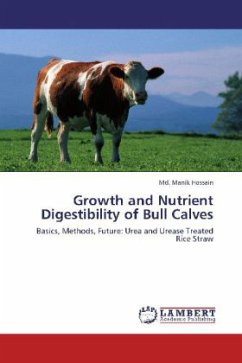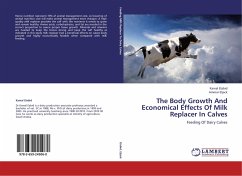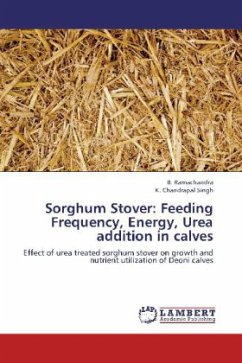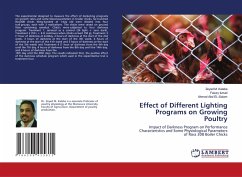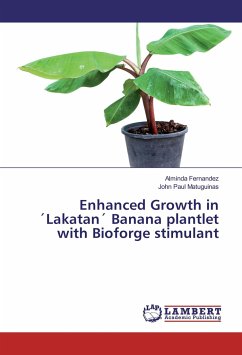
Enhanced-growth feeding programs for dairy calves
Nutrition, management and long-term effects
Versandkostenfrei!
Versandfertig in 6-10 Tagen
39,99 €
inkl. MwSt.

PAYBACK Punkte
20 °P sammeln!
In recent years, enhanced-growth feeding programs in dairy calves have been widely studied. It consists to feed calves high amounts of milk or milk replacer to achieve their potential growth. When calves are fed with an enhanced-growth feeding program grow around 800-1000 g/d in contrast to conventional feeding programs, that limits the offer of milk replacer to 500 g/d and calves only grow 450 g/d. Conventional feeding programs are conceived to stimulate starter consumption to improve rumen development and wean calves as soon as possible. This work consists on four studies that compare conven...
In recent years, enhanced-growth feeding programs in dairy calves have been widely studied. It consists to feed calves high amounts of milk or milk replacer to achieve their potential growth. When calves are fed with an enhanced-growth feeding program grow around 800-1000 g/d in contrast to conventional feeding programs, that limits the offer of milk replacer to 500 g/d and calves only grow 450 g/d. Conventional feeding programs are conceived to stimulate starter consumption to improve rumen development and wean calves as soon as possible. This work consists on four studies that compare conventional and enhanced-growth feeding programs. In all the studies, conventional-fed calves consumed more starter during the preweaning period than enhanced-fed calves, but this difference was only maintained until one or two weeks after weaning. Although enhanced-fed calves maintained a numerical advantage in body weight compared with conventional-fed calves later in life, this advantage did neither reduce the age at breeding nor improve fertility at first breeding in enhanced-fed calves.







